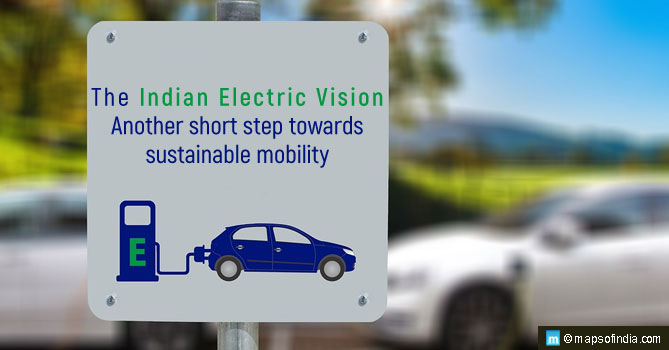One of the causes of the environmental pollution is vehicles embedded with petrol and diesel engines across the country. Petrol emits more regulated pollutants (carbon monoxide, hydrocarbons and nitrogen oxides) than diesel but they become hazardous for human health.
When it comes to electric vehicles (EV), it runs on an electric motor rather than an internal-combustion engine that produces power by burning a mix of fuel and gases. They are undoubtedly good for the environment but also provide flexibility in driving. EVs contain a battery instead of a gasoline tank. Rechargeable battery packs support an electric vehicle.
Following are the components of an electric car
- Electric motor: Electric motors are prominent, reliable and durable. They use AC power and are usually fitted in electric cars and even in juicers and toothbrushes, washing machines and dryers.
- Inverter: It is a system that changes from DC power to the AC power used in an electric vehicle motor. The inverter can alter the speed accordingly at which the motor moves by setting the frequency of the alternating current. It can also rise or lower the power or torque of the motor by modifying the amplitude of the signal.
- Battery: An electric vehicle uses a battery to maintain electrical energy that is available to use. A battery pack is composed of numerous cells that are combined into modules. Once the battery has adequate energy stored, the vehicle is ready to use. In the last five years, battery technology has enhanced massively. The EV batteries are of lithium structure having a minimal rate of discharge. EV does not lose its hold if it isn’t driven for a few days or even weeks.
- Battery Charger: It changes the AC power existing on the electricity network to DC power stored in a battery. It has to be used carefully as it monitors the voltage level of the battery cells by modifying the rate of charge. It will also oversee the cell temperatures and control the charge to assist in maintaining the battery healthy.
- Charging cable: It is used for standard charging as it is supplied with and fitted in the vehicle. It’s used for charging at home or at standard public charge points. A swift charge point will have its own cable.
- Controller: The controller deals with all the parameters of a vehicle. It manages the rate of charge using information from the battery. It also translates pressure on the accelerator pedal to fluctuate speed levels in the motor inverter.
Plug-in Hybrid Electric Vehicles or PHEVs contain an engine and electric motor to drive the car. A PHEV has a facility to recharge the battery through regenerative braking. They differ from regular hybrids by having a huge battery, and being able to plug into the grid to recharge. The regular hybrids can travel at low speed (1-2 miles) before the gasoline engine gets active. PHEVs can go anywhere from 10-40 miles prior to their gas engines which provide assistance. Example: Fiat 500e, Ford C-Max Energi, Ford Fusion Energi, Toyota Prius and Hyundai Sonata.




